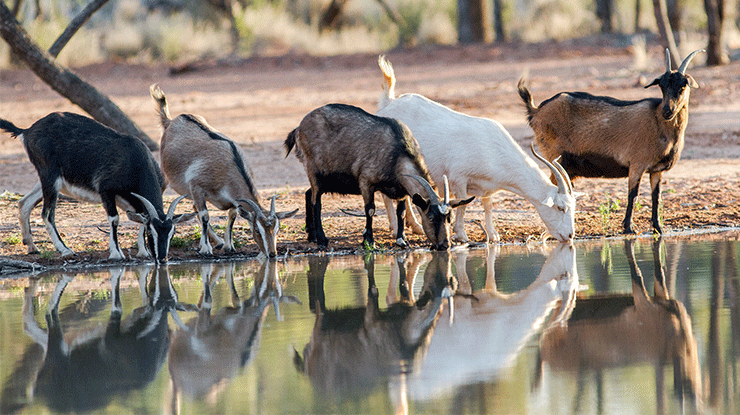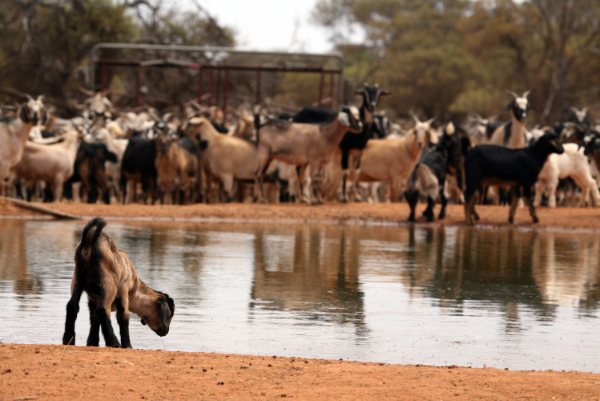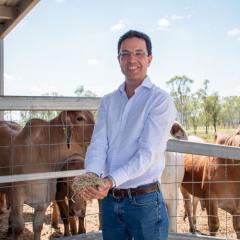New research out of South Africa has indicated scientifically selecting superior genetics in Australian rangeland goats perform just as well as Boer goat genetics.

University of Queensland (UQ) meat scientist, Professor Louw Hoffman, who supervised research that looked at the effect of breed types and castration on carcase characteristics of Boer and large frame Indigenous Veld goats (IVG) in South Africa.
Results of the study showed that under the same production conditions, IVG could have a similar potential for meat production as Boer goats, and that carcase characteristics differed more between wethers and bucks than between breed types.
Key points:
- Research in South Africa found large frame Indigenous Veld goats performed just as well as Boer goats across a range of carcase performance indicators.
- Boer goats originated from Indigenous Veld goats.
- Selecting for superior genetics in Australian rangeland goats is worthy of more R&D.

What the South African research found
The study looked at weaner male Boer goats and large frame IVG, including both bucks and wethers for each breed.
Both breeds were raised on hay and natural grass ad libitum and the recommended amount of commercial pelleted diet to a live weight between 30–35kg.
Carcase quality characteristics including live weight, carcase weights, dressing percentage, chilling loss and eye muscle area were measured.
The right sides of the carcases were divided into wholesale cuts and dissected into subcutaneous fat, meat and bone. Large frame IVG wethers were slightly lighter than the IVG bucks with no significant difference observed between Boar goats.
Wethers compared to bucks had higher dressing percentage, subcutaneous fat percentage in all primal cuts, intramuscular fat percentage and kidney fat percentage, and, overall, slightly less bone percentage

Implications for Australia
Prof Hoffman said given that the Boer goat originated out of IVG, there might be superior genetics in Australian Rangeland goats the industry could select that may perform just as well as Boer goats.
“The study in South Africa demonstrated that some of the IVG performed just as well as the Boer goats and were very similar in their performance indicators,” Prof Hoffman said.
“This then raises two questions. Firstly, how would a Boer goat perform compared to the Australian rangeland goats, and secondly, is there a potential amongst the Australian rangeland goats with a proper scientific genetic selection that we could get a superior breed and develop a breed similar to what South Africa did with the Boer goat?
“Australian rangeland goats have adapted well and there might be superior genetics in our rangeland goats but which no-one has selected for it. That’s what we need to research.”
Resources: Read the full report here: http://dx.doi.org/10.3390/ani10101884
Research contact: Professor Louw Hoffman, Professor of Meat Science, Centre for Nutrition and Food Sciences, Queensland Alliance for Agriculture and Food Innovation, The University of Queensland, T: +61 7 344 32602, m. +61 4 1798 4547 E: louwrens.hoffman@uq.edu.au
Media contact: Emily Litzow, Meat and Livestock Australia E: elitzow@mla.com.au
Article first published Potential to select for Australian rangeland genetics by Emily Litzow, Meat & Livestock Australia, 21 June 2021.
The Queensland Alliance for Agriculture and Food Innovation is a research institute at The University of Queensland supported by the Queensland Government via the Queensland Department of Agriculture and Fisheries.



